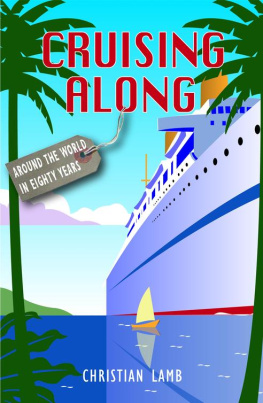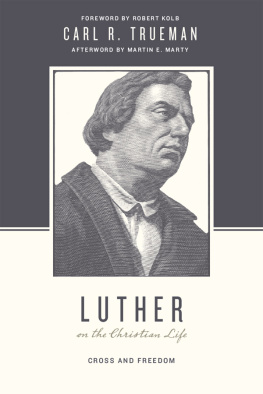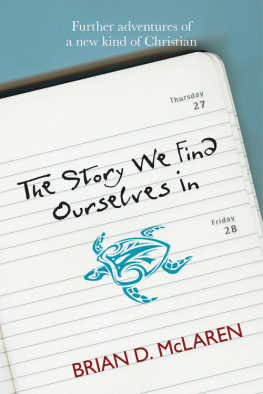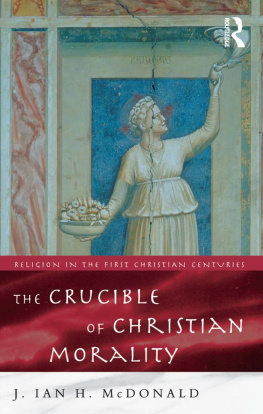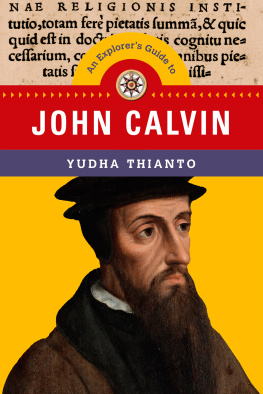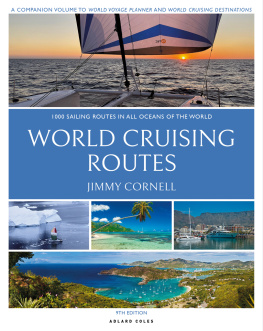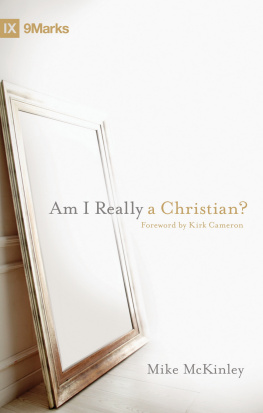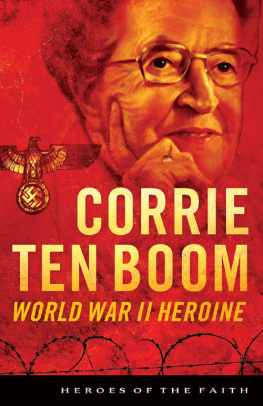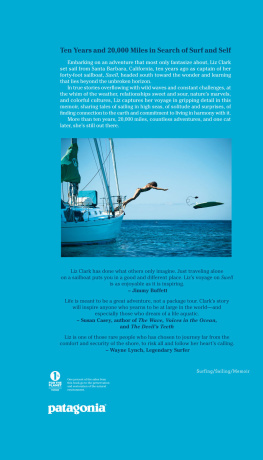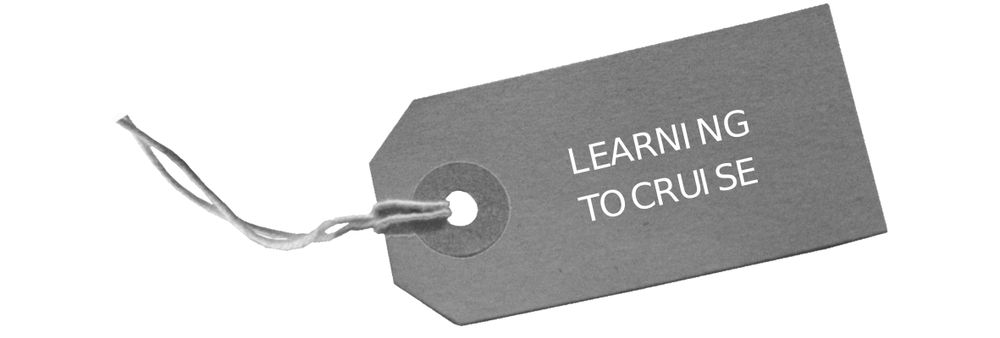My thanks for so many enjoyable cruises over the last eighty years must go out to many people who sadly I am unable to name they are the captains and the crews of the many vessels on which Ive sailed, and also my fellow passengers and travelling companions. Without you all this book could not have been launched.
However, there are others who I can acknowledge by name and to whom I extend my appreciation.
My most recent voyages have been wonderfully organised by cruise specialist Amelia Dalton (www.ameliadaltontravel.co.uk) and so my first thanks must go her.
My eldest grandson, Jamie Rollo, coincidentally happens to be Head of Travel and Leisure for Morgan Stanley; his input and advice have been extremely useful.
Others include various authors who have informed and inspired me, and in some cases from whom I quote here in my own book. These include Meriel Larken (The Ship, The Lady and The Lake, Bene Factum Publishing 2012), Hugh Low (Diaries 1844-1846, most recently published by Natural History Publications (Borneo 2002), Robert Fortune (Three Years Wandering in China, first published in 1847 by John Murray), and Colonel J. H. Williams (Elephant Bill, first published in 1950 by Rupert Hart-Davis).
Thanks also to Mike Phillips who from the far reaches of Cornwall continues to advise me and keep my wilful computer fully functioning up here in London.
And finally my gratitude goes to Anthony Weldon and Dominic Horsfall of Bene Factum for their excellent editing and expertise in producing this book, and to Tony Hannaford for the design and the iconic cover.
AROUND THE WORLD IN EIGHTY YEARS
I t seems the blackest irony that the terrible disaster which struck the Titanic could have been the catalyst which launched this desirable mirage. Her unlucky encounter with the iceberg and subsequent sinking, with such loss of life, so dramatically reproduced in the film, could never be forgotten, but neither could her glamour; she had been built as the largest and fastest ship afloat advertised as unsinkable she was a legend even before she sailed. White Star Line, later Cunard, had spared no expense in assuring her luxury and safety so sure were they of this that they provided only the number of lifeboats specified by the Board of Trade, which as we all know was woefully short; her 2,200 passengers were a mixture of the worlds wealthiest, glorying in the elegance of First Class accommodation, and immigrants packed into steerage. In her day 1912 before the First World War, cruising for pleasure was a new idea, then just catching on; travelling had always been a dour and sometimes dangerous means to an end, a necessary way of getting from A to B; soldiers, civil servants and very often their families had to get to the far flung parts of the British Empire; also travel arrangements made for their many friends and relations, who became known as the fishing fleet (the young females following hopefully, very often after suitable young men to marry). It was many years before people began to think of ships as anything but means of transport. But now Titanic was part of history, an epic never to be erased from ones memory; but rather like some of the horrors of war, the desperate pictures began to fade, and as crossing the Atlantic became a frequent necessity, Cunard seized the opportunity to tempt the rich and famous once again.
The Queen Mary was built for the sprint between Southampton and New York; she was an immediate success and won the prestigious Blue Riband; this was the most coveted trophy afloat and was first won by Scotia in 1862 at the average speed of 15 knots; it was a race across the Atlantic and was won by Cunard off and on for the next 100 years. In 1938 she still won the Blue Riband at 31.69 knots, but lost it in 1952 to United States at 35.59 knots.
The grandeur of the Queen Mary was provided by her architects who chose Art Deco for her background theme, vast arched saloons, specially woven carpets and beautiful furniture the First Class cabins were out of this world; special woods from different parts of the British Empire were chosen for the furnishings of the staterooms; it was noted with some amazement that after the ship docked, not a single ashtray was left on board such was the popularity of these much coveted items as souvenirs.
It was in the early 1930s that the golden age of liners began. The French Government subsidised the building of the Normondie, which wrested the Blue Riband from the Queen Mary several years running and took her place as the largest and fastest, and with her desirable Gallic culture boasted an almost intimidating formal nobility.
During the late thirties cruising was being aimed more at the middle classes and became the height of fashion, almost a status symbol; you could spend a dollop of your retirement pension on a three-month voyage, which would take you round the world and back again. It was an opportunity to take part in this national sport, showing off your wifes ravishing wardrobe of the latest, up to the minute, brand new fashion, while she vied with her friends to have the most unbelievable amount of elegant, matching luggage. Enterprising ships took to the warmer waters of the Mediterranean, Cunard had the Atlantic to themselves and spread the aspiration that Britannia still ruled the waves. Sunbathing by the pool, deck games, bingo, hairdressing, massage parlours, it was all there for you. Then of course came World War 2 and the end of such frivolities.
It was at that moment that our monsters, as these capacious liners were called, came into their own, crossing the Atlantic at 26 knots, uniquely carrying whole divisions of troops; they were never once attacked by U-boats this use of their speed and size made them unassailable. Serving as a member of the Womens Royal Naval Service (WRNS) myself, it was my job at Combined Services Headquarters at Plymouth to plot these huge ships with their precious cargo across the ocean, and on board many of them were other Wrens running the signals office, in constant touch with Bletchley Park, who would warn them of any dangers ahead or any change of course necessary. Americans took this lesson to heart and any large liner built after the war would be designed with the possibility of being turned into a hospital or troopship if required. The United States, built with this transport potential, was the biggest and fastest ever, and stole ten hours off the Blue Riband record.
It took a good few years after the war for anyone to think of holidays; but as rationing came to an end and thoughts of such pleasures began to pick up, and having endured one of the coldest winters on record, abroad sounded attractive. The well-known English belief that Dagoes begin at Calais began to be questioned for the first time. Soon flying became safer and cheaper, and package holidays started to take hold; as the prices came down, almost anyone could afford a week in Benidorm or on a Spanish Costa, and an impressive tan to prove it. Then cruise ships began to re-appear.
P erhaps I first became seduced into cruising when an eccentric friend invited me in the early seventies to go with her on the fairly new Queen Elizabeth 2 (Cunards flagship had launched in 1969); a quick dash there and back, all because she fancied having lunch in the restaurant at the top of the Twin Towers in New York, and I fell for this super plan with alacrity. There was a slight hitch when the restaurant turned out to have a private membership, but the Manager very decently waived the subscription when he heard we were only there for the day. The

